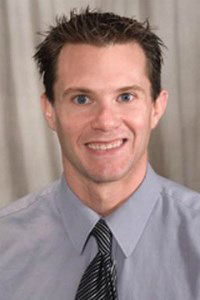 The National Institutes of Health has awarded a grant to URMC researchers exploring methods of making cognitive training more effective for older adults by improving their attitudes toward computers.
The National Institutes of Health has awarded a grant to URMC researchers exploring methods of making cognitive training more effective for older adults by improving their attitudes toward computers.
Feng Vankee Lin, Ph.D., RN, an SON assistant professor and director of the CogT Lab promoting successful aging, and Benjamin Chapman, Ph.D., MPH, associate professor of Psychiatry, are principal investigators on the $421,000, two-year study.
Computerized cognitive training methods, such as online “brain games” have been widely implemented among adults with mild cognitive impairment (MCI) in recent years. However those interventions have not proven to be a consistently reliable method of improving or maintaining the cognitive health of older adults. Results are highly variable, and one possible explanation lies in how comfortable seniors feel using technology.
 “The goal of this study is to generate a proof-of-concept for an intervention that may improve attitudes toward computers among those older adults with MCI,” said Lin, who is now principal or co-investigator on six current NIH grants. “Improving the intervention engagement of those individuals, we think, will then help us develop more effective computerized cognitive interventions in the future. It is the first study that we know of that strives to augment computerized cognitive training by addressing an attitudinal or affective element of the person.”
“The goal of this study is to generate a proof-of-concept for an intervention that may improve attitudes toward computers among those older adults with MCI,” said Lin, who is now principal or co-investigator on six current NIH grants. “Improving the intervention engagement of those individuals, we think, will then help us develop more effective computerized cognitive interventions in the future. It is the first study that we know of that strives to augment computerized cognitive training by addressing an attitudinal or affective element of the person.”
At the core of the study is the notion of person-centered care – integrating individuals’ preference throughout the process of intervention. The person-centered approached has been shown to improve engagement among older persons, including those with MCI, and pilot data collected at assisted-living facilities suggests that computer-led leisure activities promotes psychological well-being among older persons with MCI and may change their perception about technology. A computer used for fun activities may no longer seem daunting, complex, or irrelevant, but instead be seen as familiar and enjoyable.
“These results are consistent with a number of theories indicating that exposure to pleasurable experiences with an object or task improves several dimensions of attitudes, including affective and cognitive components, as well as behavior and motivation,” Lin said.
Grounded in this pilot data and the theory around it, investigators will lead a small randomized controlled trial among assisted-living residents to assess whether a period of computer-led leisure activities prior to cognitive training improves attitudes toward computers, engagement with the intervention, or cognitive outcomes.
Anton Porsteinsson, M.D., professor of Neurology, is a co-investigator on the grant, which is also receiving recruitment support from Dallas Nelson, M.D., and Sarah Howd, M.D., in the Department of Medicine’s Division of Geriatrics and Aging.